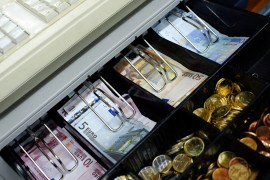Payments trends and the “first world unbanked”
As we embark on a new decade, it is time to consider where we have been as well as what the next several years hold for the fintech market and financial inclusion overall.
We expect to see significant change in the form of consolidation, specialisation and re-consolidation in the payments sector, and as cashless payments increasingly become the norm, special attention needs to be paid to making sure the trend of going cashless does not further exclude the very people for whom the fintechs are trying to foster inclusion.
Digital payments as a commodity
For years international and domestic/consumer payments have been the epitome of stability. By the beginning of 2000 a significant number of banks were still using telexes and key-tables for payment instructions transmission, trade finance agreements confirmations and other important business tasks.
The financial services swamp began to bubble somewhat abruptly, driven by two factors: The Patriot Act signed in 2001, and the war on drugs, leading to increased compliance demands that slowed payment processing and made it more complicated. The earlier collapse of the first web bubble (leading investors to want to seek out other investment targets) and the birth of Silicon Valley as a venture capitalist mecca of the world, influenced the situation, too.

Cash is the most inclusive financial instrument, and many seem to forget this fact.
The resulting PayPal, crypto currencies, Revolut, TransferWise, Ripple, and other fintechs were and are nothing more but market reaction to inefficiency, inertia and stagnation. In China, enter WeChat and AliPay, wallets that shaped markets across Asia; a natural response of a society that could afford the luxury of building a 21st century payment infrastructure from scratch without having to deal with legacy solutions. Mobile operators around the world are also trying to mimic the success of m-Pesa, some quite close to actually making it.
As a result, the threshold for cashless payments is falling, and banks and payment processors continue to offer lower and lower fees each day. Regulatory Initiatives like the EU’s Second Payment Services Directive (PSD2) further drive competition, and incentivise the de-bundling of payment services.
Just like telecommunications a decade ago, digital payments are becoming a commodity. In 2005, many couldn’t believe that an international HD-video call could be free for the customer, and look at us now. And we have not yet reached the final point of payment market transformation.
The first reaction of any industry to falling margins is consolidation. We are observing it in the banking sector. Some incumbent banks will continue to offer payment services even at a loss, while some will decide to spin off their payment businesses as something that won’t contribute to banks’ bottom lines anymore.
The second wave of re-consolidation will bring the payment processing market into an oligopoly of a handful of global players. Payment spin-offs from the banks, and surviving fintechs will eventually define this landscape at the end of this decade.
Emergence of the “first-world unbanked”
This brings us to another trend: the emerging financial exclusion in the first world – one that is caused by the progress of cashless payment tech. It is ironic that the fintech and cashless payments industry, a force that heralds financial inclusion, sometimes achieves exactly the opposite, but this is what we see happening now.
Most industry stakeholders (fintechs, banks, regulators, tax authorities) and banks are mindlessly pushing forward a paradigm of a cashless society. Because it’s cheaper, because it’s more effective and more transparent and hence – easier to regulate. Ÿet, cash is the most inclusive financial instrument, and many seem to forget this fact.
Banks are forced to cut costs, and branches are the highest cost center. Cash distribution is a cost, too, for both banks and businesses. Taxmen want more taxes and more transparency. Fintech clients are getting on-boarded remotely and given free services, for which fintech investors pay, so fintechs are not very interested in developing their branch networks eitherl. As of now, millennials are (presumably) happy, but not all the bank clients are millennials.
So, some people become detached from the marvels of modern financial system. And these people pay in cash. They are, mostly, underprivileged members of the “golden billion” societies – seniors, immigrants, low-income, less educated. Sometimes, cultural and historical factors, determine the preference for cash. Sometimes, even neurobiology – a German study showed that people who process information slower than average, prefer cash as the simplest way to control their spending. This other face of the “digital divide” will have to be adequately addressed in the medium-term perspective.
How do we bring these people that use cash into the fold? Will the generational change affect the consumer preferences? Do we understand that moving entirely to cashless is unfeasible now and will remain unfeasible during the new 20s? How do we provide adequate levels of anti-money laundering and know your client checks for cash-originating transactions? Is there an intrinsic privacy right that we infringe by not providing cash-based services? The questions are numerous, and there is no certain answer to many of them.
One thing is clear though: here is where retail, customer-faced businesses are to step in. The decline of traditional branch banking and even ATMs will give way to digital financial services, i.e. a point of sale technology, that is able to process cash as easily as any other payment method. The 20s will be the years of falling cash usage, but it is our responsibility as an industry, to ensure this process is smooth and painless, and no-one is left behind.
By Felix Polianski, vice-president for mobile and digital financial services at CreditPilot











































